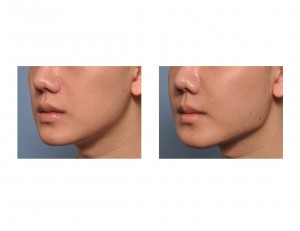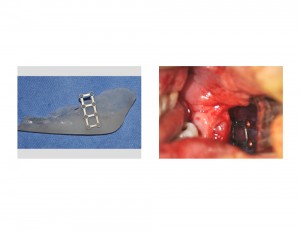
Regardless of jaw angle implant type, they are usually placed as pairs and their positional symmetry becomes an important part of the aesthetic result. Because the implants are usually smooth (silicone), assuring their position on the bone (and often partly off it to length the angle) is important as any instability can lead to displacement. One simple technique to secure implant position, and the most common one that I use, is single screw fixation. Placed percutaneously, a single 1.5mm screw placed through the implant into just the outer cortex of jaw angle bone is usually sufficient to secure its position.
But in some jaw angle implant cases, particularly those which have suffered implant displacement, an even more secure form of fixation is needed. Jaw angle implant displacement is always superiorly, up and away from its lower desired position over the angle. With healing an enveloping capsule develops around the implant which must be opened or removed to permit it to be positioned in its lower desired position during a revisional procedure This leaves a large upper space into which an unsecured implant can become displaced back into it during the healing phase.

Dr. Barry Eppley
Indianapolis, Indiana


